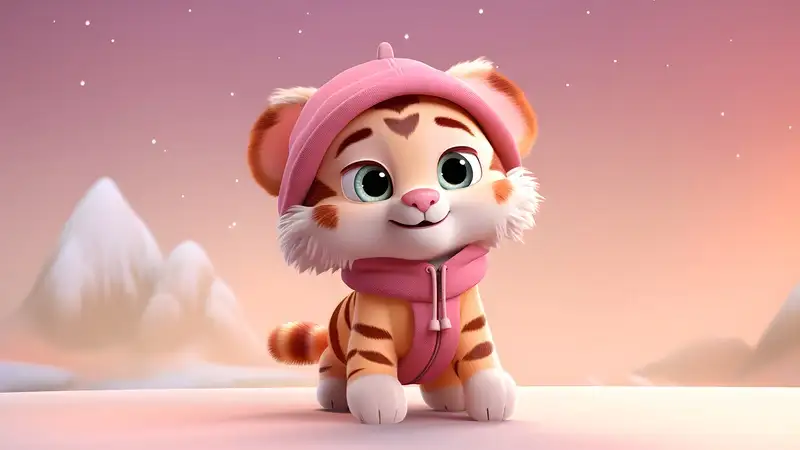
Kuromi: Exploring the Connection with Hello Kitty
In the vibrant world of Sanrio characters, few figures capture the”kuromi:fox5ydxdt58= hello kitty” imagination as strongly as Kuromi. This mischievous and edgy character stands in stark contrast to the beloved Hello Kitty, yet their stories intertwine in fascinating ways. This article delves into the evolution of Kuromi, her relationship with Hello Kitty, and her impact on popular culture.
Origins of Kuromi
Kuromi debuted in 2005 as part of Sanrio’s expansive universe of characters. Created by Sanrio, a company renowned for its adorable characters, Kuromi brings a unique twist to the roster. Unlike the universally sweet and friendly Hello Kitty, Kuromi embodies a punk-rock aesthetic with her signature black jester’s hat adorned with a pink skull.
The character of Kuromi emerged from the need to offer a new kind of edge within the Sanrio lineup. She represents a playful rebelliousness that contrasts with the classic cuteness of characters like Hello Kitty. Kuromi’s design and persona tap into a different kind of appeal, attracting fans who appreciate a blend of attitude and charm.
Hello Kitty: The Iconic Star
Hello Kitty, introduced in 1974,”kuromi:fox5ydxdt58= hello kitty” remains one of the most recognizable characters globally. Created by Yuko Shimizu, Hello Kitty represents a symbol of innocence and friendship. Her simplistic design—a white cat with a red bow—embodies purity and warmth, making her a beloved figure for people of all ages.
Hello Kitty’s influence extends beyond just merchandise. She has appeared in television shows, movies, and even collaborations with major fashion brands. Her global appeal has made her a cultural icon, and her name is synonymous with cuteness and positivity.
The Connection Between Kuromi and Hello Kitty
At first glance, Kuromi and Hello Kitty might seem “kuromi:fox5ydxdt58= hello kitty”like polar opposites. Kuromi’s punk-rock look and mischievous nature contrast sharply with Hello Kitty’s sweet and gentle demeanor. However, both characters share a common origin in the Sanrio universe, which forms the basis of their connection.
Sanrio has a knack for creating diverse characters that appeal to various audiences. While Hello Kitty captures the hearts of those seeking a traditional, heartwarming character, Kuromi appeals to those who enjoy a more rebellious and edgy vibe. Despite their differences, both characters coexist within the same universe, reflecting Sanrio’s ability to cater to a wide range of tastes.
Kuromi’s Role and Character Traits
Kuromi stands out due to her distinctive appearance and personality. Her black jester’s hat with a pink skull adds a touch of punk to her overall look. She often sports a mischievous grin and a playful demeanor, which makes her an interesting character to follow. Unlike Hello Kitty, who is known for her kindness and innocence, Kuromi is known for her cheeky and rebellious nature.
In Sanrio’s fictional world, Kuromi often finds herself involved in various adventures and mischief. She tends to play the role of an antagonist or a trickster, adding a layer of excitement and unpredictability to the stories in which she appears. Her character often contrasts with Hello Kitty’s more straightforward, friendly demeanor.
Kuromi’s Popularity and Merchandising
Since her debut, Kuromi has garnered a significant following. Her unique style and personality resonate with fans who appreciate characters that break the mold of traditional cuteness. Sanrio capitalizes on this appeal through a wide range of merchandise, including plush toys, apparel, and accessories.
The popularity of Kuromi also reflects the broader trend of blending different styles and attitudes in character design. While Hello Kitty represents classic cuteness, Kuromi embodies a more modern, edgy aesthetic. This juxtaposition caters to a diverse audience, allowing fans to connect with characters that reflect different aspects of their personalities.
Kuromi in Popular Culture
Kuromi’s influence extends beyond Sanrio’s products. The character has appeared in various forms of media and pop culture. Fans often see her featured in anime, online content, and even as part of art exhibitions. Her rebellious persona and distinctive style make her a favorite among those who enjoy characters with a bit of an edge.
Collaborations between Kuromi and other brands or “kuromi:fox5ydxdt58= hello kitty”media often highlight her unique attributes. Whether it’s a special edition product or a feature in a themed event, Kuromi’s presence adds a touch of excitement and variety to the Sanrio brand.
The Legacy of Kuromi and Hello Kitty
The legacy of Kuromi and Hello Kitty highlights Sanrio’s success in creating characters with lasting appeal. Hello Kitty’s role as a symbol of cuteness and positivity has established her as a cultural icon, while Kuromi’s edgy style and mischievous personality showcase Sanrio’s versatility in character design.
Together, these characters represent different facets of Sanrio’s creative vision. They appeal to various tastes and preferences, allowing the company to reach a broad audience. The ongoing popularity of both Kuromi and Hello Kitty underscores their significance in the world of character design and popular culture.
Conclusion
In exploring the dynamic between Kuromi and Hello Kitty, we see how Sanrio’s characters contribute to a rich tapestry of design and storytelling. While Hello Kitty remains a symbol of innocence and charm, Kuromi offers a refreshing contrast with her rebellious and edgy persona. Their connection through the Sanrio universe highlights the company’s ability to create diverse and engaging characters that resonate with a wide range of fans.
Kuromi’s rise to popularity, alongside the enduring appeal of Hello Kitty,”kuromi:fox5ydxdt58= hello kitty” reflects the success of Sanrio in crafting characters that continue to capture the hearts and imaginations of people around the world. As we look to the future, both Kuromi and Hello Kitty will undoubtedly continue to play significant roles in the ever-evolving landscape of popular culture. See More
